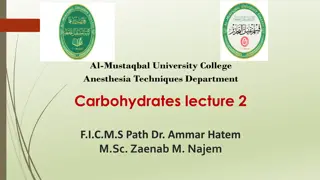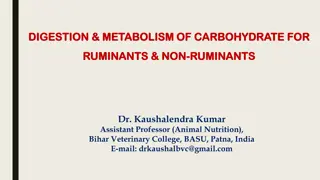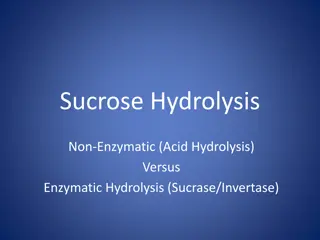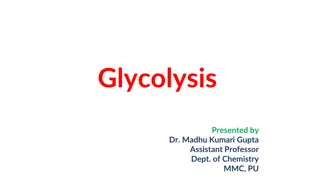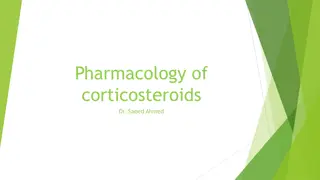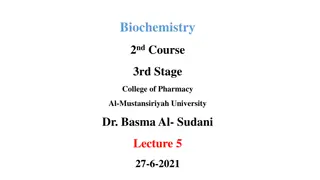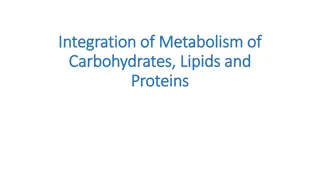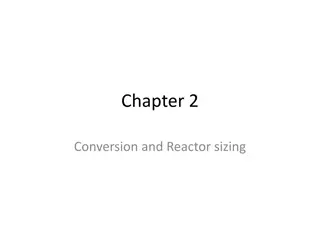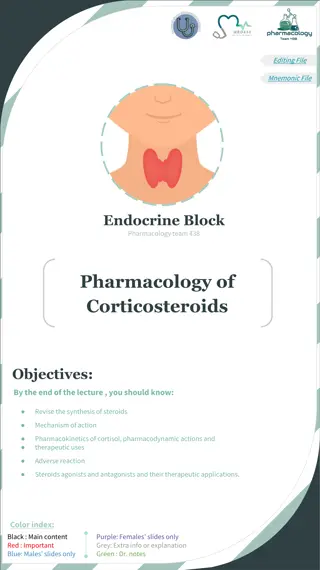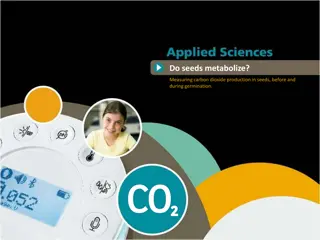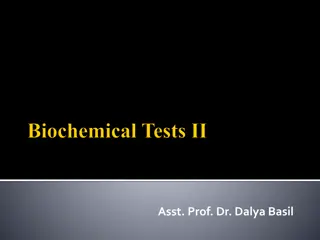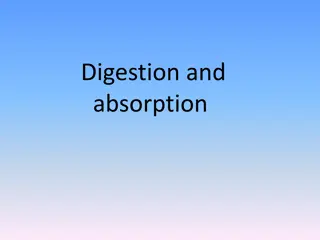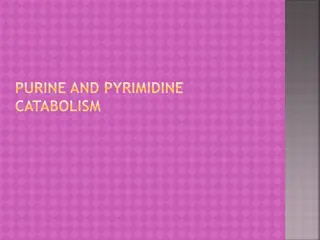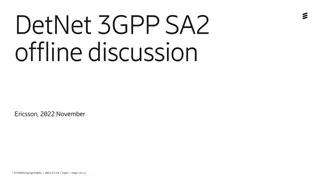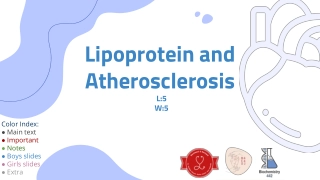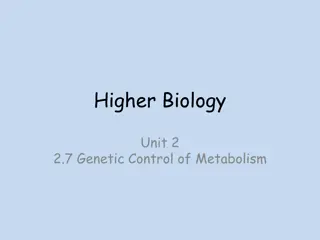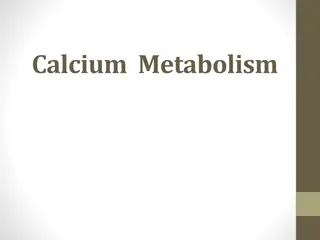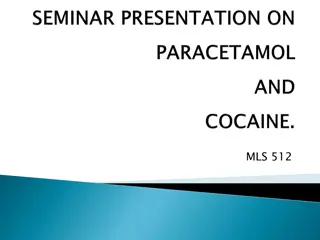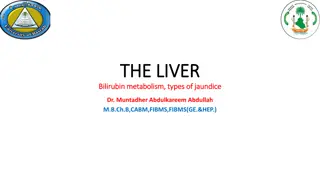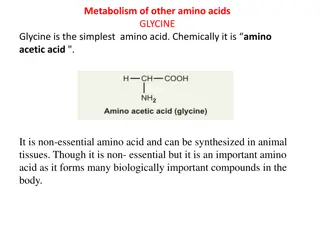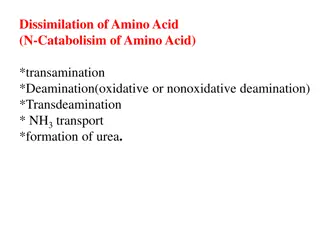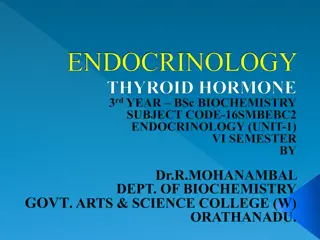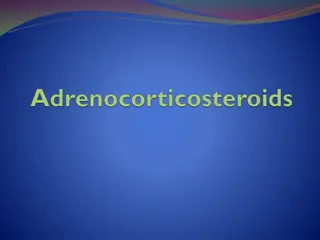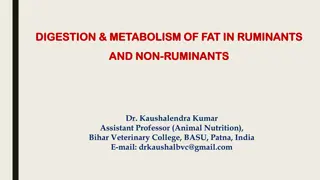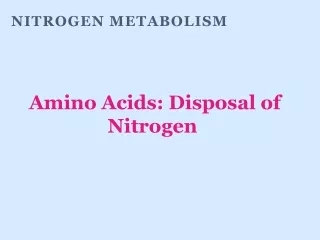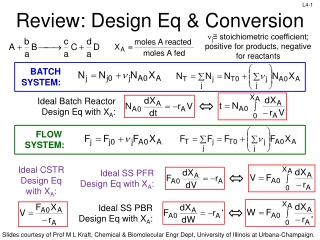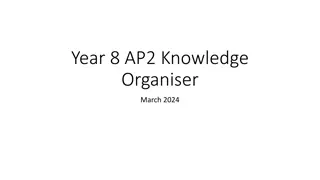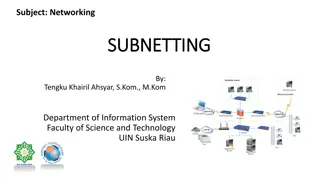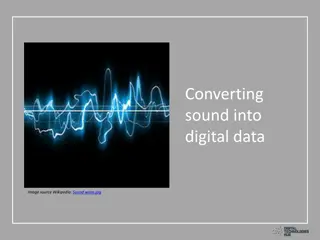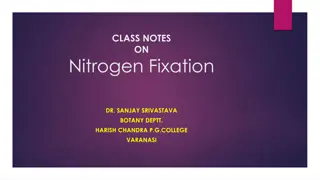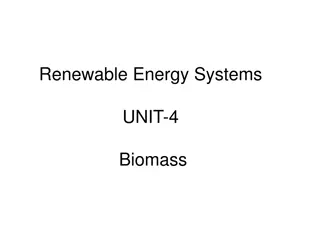Gluconeogenesis: Pyruvate to Phosphoenolpyruvate Conversion in Carbohydrate Metabolism
Gluconeogenesis is a crucial pathway where pyruvate is converted to phosphoenolpyruvate through multiple steps involving enzymes like pyruvate carboxylase and phosphoenolpyruvate carboxykinase. This process occurs in the mitochondria and cytosol, requiring coenzymes like biotin and GTP. Alternate paths and bypass reactions are also discussed, emphasizing the intricate regulation of glucose synthesis.
Download Presentation

Please find below an Image/Link to download the presentation.
The content on the website is provided AS IS for your information and personal use only. It may not be sold, licensed, or shared on other websites without obtaining consent from the author. Download presentation by click this link. If you encounter any issues during the download, it is possible that the publisher has removed the file from their server.
E N D
Presentation Transcript
Carbohydrate Metabolism (Unit 2) Gluconeogenesis continued .. Class name IVH Course name - ZOO-Biochemistry (Rohit)
Overview of Overview of Gluconeogenesis Gluconeogenesis
First step (Conversion of Pyruvate to Phosphoenolpyruvate 1.This reaction cannot occur by reversal of the pyruvate kinase reaction of glycolysis. 2. Pyruvate is first transported from the cytosol into mitochondria or is generated mitochondria by transamination, in which the -amino group is removed from alanine (leaving pyruvate) and added to an - keto carboxylic acid (transamination reactions). from alanine within 3. Conversion of Pyruvate to Phosphoenolpyruvate occurs is a two step process.
First step is to convert pyruvate to Oxaloacetate acid 1. Pyruvate carboxylase, a mitochondrial enzyme converts the pyruvate to oxaloacetate. 2. It requires the coenzyme biotin. 3. The reaction involves biotin as a carrier of activated HCO3 .
Second step involves (Conversion of OAA to Phosphoenolpyruvate (PEP) 1. Because the mitochondrial membrane has no transporter for oxaloacetate, before export to the cytosol the oxaloacetate formed from pyruvate must be reduced to malate by mitochondrial malate dehydrogenase, at the expense of NADH. 2. Mitochondrial malate dehydrogenase functions in both gluconeogenesis and the citric acid cycle 3. Malate leaves the mitochondrion through a specific transporter in the inner mitochondrial membrane and in the cytosol it is reoxidized to oxaloacetate, with the production of cytosolic NADH
Conversion of OAA to PEP continued. 1. The oxaloacetate is then converted to PEP by phosphoenolpyruvate carboxykinase . 2. This Mg2-dependent reaction requires GTP as the phosphoryl group donor
Conversion of Fructose 1,6-Bisphosphate to Fructose 6-Phosphate Is the Second Bypass 1. The second glycolytic reaction that cannot participate in gluconeogenesis is the phosphorylation of fructose 6- phosphate by PFK-1. 2. Because this reaction is highly exergonic and therefore irreversible in intact cells, the generation of fructose 6-phosphate from fructose 1,6-bisphosphate is catalyzed by a different enzyme, Mg2- dependent fructose 1,6- bisphosphatase (FBPase-1).
Conversion of Glucose 6-Phosphate to Glucose Is the Third Bypass 1. The third bypass is the final reaction of gluconeogenesis, the dephosphorylation of glucose 6-phosphate to yield glucose. 2. The reaction catalyzed by glucose 6-phosphatase does not require synthesis of ATP; 3. It is a simple hydrolysis of a phosphate ester: NoteGluconeogenesis Is Energetically Expensive, but Essential
Gluconeogenesis Is Energetically Expensive, but Essential 1.The sum of the biosynthetic reactions leading from pyruvate to free blood glucose.
Regulation of Gluconeogenesis 1.Gluconeogenesis expansive process. 2. It is regulated by allosteric and substrate level control mechanism. The site of regulation are described in diagram. is an
Carbohydrate Metabolism (Unit 2) Carbohydrate Metabolism (Unit 2) Glycogenesis Glycogenesis Class name IVH Course name - ZOO-Biochemistry (Rohit)
Introduction 1.It is the process of formation of glycogen. 2. Glycogen is a highly branched , very large polymer of glucose molecules linked along its main line by alpha-1,4 glycosidic linkages, branches arise by alpha-1,6 glycosidic bonds at about every 10-12 residues. 3.Glycogen stores in the cytosol as granules. 4.Glycogen does not change the osmolarity of the cells so sugar in animal cells is stored in the form of Glycogen only. 5.Muscles and liver are the major sites for storage of glycogen.
5. For glycogenesis , hexose sugar are transformed or polymerised which involves sugar nucleotides (like UDP-glucose). 6. Sugar nucleotide are compounds in which anomeric carbon of a sugar is activated by attachment to a nucleotide through a phosphate ester linkage. 7. Sugar nucleotides are the substrate for polymerisation of monosaccharide into disaccharides , glycogen, starch, cellulose, polysaccharides. Here represented glycosyl Nucleotide Uridine di phosphate. sugar is D- by group part and by
The starting point for synthesis of glycogen is Glucose 6 Phosphate. The glucose 6-phosphate is converted to glucose 1-phosphate by phosphoglucomutase enzyme.
Conversion of Glucose 1-phosphate to UDP-Glucose Glucose 1-phosphate is converted to UDP-glucose by the action of UDP-glucose pyrophosphorylase.
1. A condensation reaction occurs between a nucleoside triphosphate (NTP) and a sugar phosphate. 2. The negatively charged oxygen on the sugar phosphate serves as a nucleophile, attacking the phosphate of the nucleoside triphosphate and displacing pyrophosphate.
UDP-glucose is the immediate donor of glucose residues in the reaction catalyzed by glycogen synthase. Glycogen synthase is an enzyme which promotes the transfer of the glucose residue from UDP- glucose to a nonreducing end of a branched glycogen molecule.
1. Glycogen chain is elongated by glycogen synthase. 2. The enzyme transfers the glucose residue of UDP-glucose to the nonreducing end of a glycogen branch to make a new (1n4) linkage.
Branching of Glycogen chain is done by another enzyme called Glycosyl (4-6) transferase. 1. Glycogen synthase cannot make the (1-6) bonds found at the branch points of glycogen. 2. These are formed by the glycogen-branching enzyme called glycosyl- (4-6)-transferase. 3. The glycogen-branching enzyme catalyzes transfer of a terminal fragment of 6 or 7 glucose residues from the nonreducing end of a glycogen branch having at least 11 residues to the C-6 hydroxyl group of a glucose residue of the same or another glycogen chain, thus creating a new branch
Branch synthesis in glycogen. The glycogen-branching enzyme (glycosyl-(4-6)-transferase) forms a new branch point during glycogen synthesis.
Glycogenesis can not start de novo but requires primer 1. The very first step in the synthesis of a new glycogen molecule is the transfer of a glucose residue from UDP-Glucose to the hydroxyl group of Tyr 194 residue of Glycogenin catalysed by the proteins intrinsic glucosyltransferase activity. 2. Glycogenin is a tyrosine based protein made up of two identical subunit. 3. Each subunit of glycogenin catalyzes the addition of few glucose units to its partner in the glycogenin dimer. 4. Glycogenin attaches covalently to the single reducing end of the glycogen molecule.



